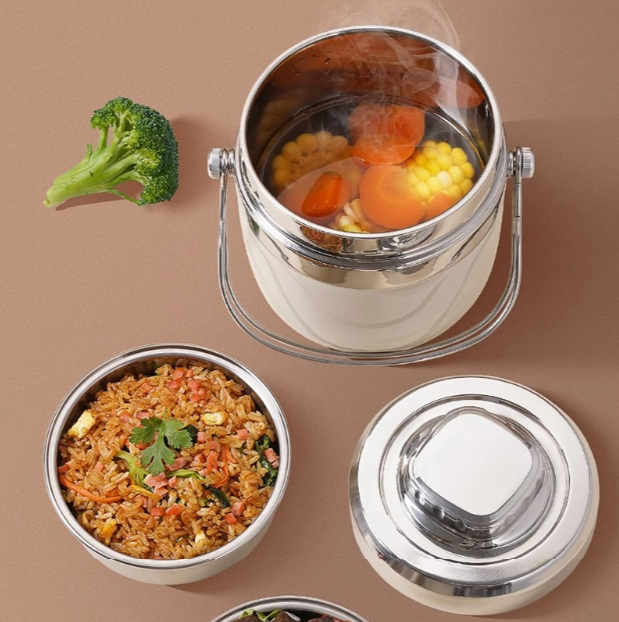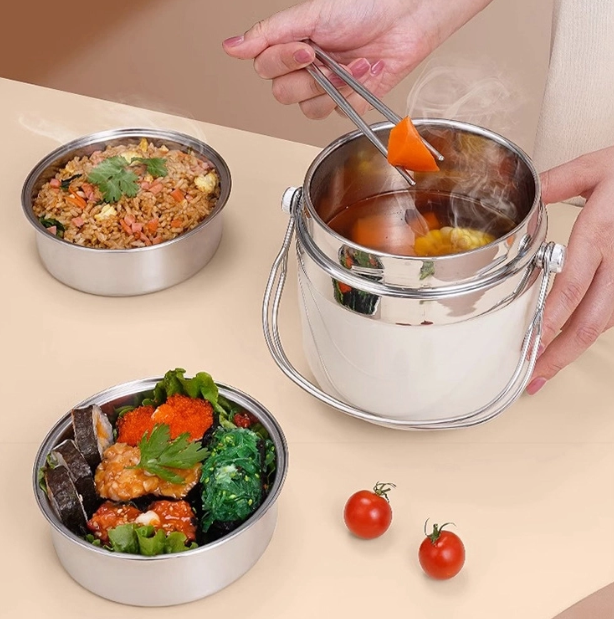When packing a bento lunch box, keeping your meal fresh and safe is crucial. A cold lunch box not only ensures the safety of the food but also preserves the taste and texture. Properly chilled lunches prevent bacteria growth and maintain ingredient quality.
In this article, we’ll discuss the importance of keeping your bento lunch box cold and the best tools and techniques to achieve that. You'll learn how to keep your food safe, fresh, and delicious with the right strategies.
Why Keeping Bento Lunch Boxes Cold is Crucial
Food Safety
The primary concern with packed lunches, especially for perishable items, is food safety. When food is kept at improper temperatures, harmful bacteria can grow rapidly, increasing the risk of foodborne illnesses. The USDA recommends keeping cold food below 40°F (4°C) to prevent bacterial growth. If the temperature rises above this, bacteria such as Salmonella and E. coli can multiply quickly, which can lead to food poisoning.
Enhances Meal Quality
Keeping your bento lunch box cold not only ensures safety but also preserves the quality of your food. Many dishes, like salads or chilled pasta, are best enjoyed at a low temperature, and keeping them cold ensures they stay fresh. Additionally, cold food can help maintain its texture and prevent wilting, sogginess, or melting, especially in foods like yogurt or chocolate.
Freshness Preservation: Cold foods retain their crispness, flavor, and texture better, making your lunch more appetizing and satisfying.

Essential Tools for Keeping Bento Lunch Boxes Cold
Insulated Bento Boxes
An insulated bento lunch box is one of the most effective tools to keep your food cold for hours. Insulated containers are designed with double walls, vacuum seals, or foam insulation that traps cold air inside, keeping your food fresh and chilled.
Features to Look For: When choosing an insulated bento lunch box, look for ones that offer double walls for enhanced insulation, vacuum seals, and high-quality materials. This ensures long-lasting cooling.
How Insulation Works: Insulation prevents the cold air from escaping, maintaining a consistent temperature inside the container. This method works efficiently to keep your bento lunch box cold for several hours, even without refrigeration.
Ice Packs and Gel Packs
Ice packs and gel packs are essential for maintaining the cold temperature in your bento lunch box. These packs are designed to fit snugly inside the lunch box and can keep your food cold for extended periods.
Reusable Ice Packs | These are more eco-friendly and cost-effective over time. Simply freeze them overnight and place them in your lunch box in the morning. |
Disposable Gel Packs | These are a convenient option for one-time use. They are easy to freeze and use but are less eco-friendly than reusable ice packs. |
Tip: Always ensure that the ice packs are completely frozen before packing them in the lunch box. This will ensure maximum cooling.
Pre-Chilling Your Bento Box
Before packing your bento lunch box, pre-chill the container by placing it in the refrigerator overnight. You can also incorporate frozen ingredients, such as fruits or yogurt, into your lunch. As these ingredients thaw, they help keep the rest of your meal cold.
Best Practices for Packing Bento Lunch Boxes to Stay Cold
Proper Packing Techniques
The way you pack your bento lunch box matters when it comes to keeping it cold. Organize your meal with cooling in mind by placing cold items closest to the ice packs. Separate compartments can help maintain the ideal temperature for different food items, ensuring that your lunch stays fresh.
Layering for Optimal Cooling: Place colder items like salads and yogurt near the ice pack. Use multiple layers of insulation to trap cold air.
Leak-Proof Containers: To avoid cross-contamination and keep food safe, use leak-proof containers. This ensures that juices from fruits or condiments don't leak into other parts of the meal.
Use of Cold Ingredients
Incorporating pre-chilled ingredients into your lunch is a smart way to keep the entire bento lunch box cold. Items like fruits, chilled pasta dishes, or salads are naturally cold and help maintain the overall coolness of the box.
Cold Food Choices: Opt for dishes that don't require heating and can naturally stay cold, such as fresh salads, fruits, cold wraps, and deli meats.
Tip: Use chilled or frozen food like berries, yogurt, or cut-up vegetables as part of your lunch. They will help keep everything inside the bento box cool.
Avoiding Direct Heat Exposure
Once packed, it’s important to keep your bento lunch box away from heat sources such as direct sunlight or heating vents. Exposure to heat will cause the food inside to warm up, even if the box is insulated.

Additional Cooling Techniques and Tips
Using Insulated Lunch Bags
To complement your bento lunch box, use an insulated lunch bag. These bags are specifically designed to provide extra insulation and keep your meal cold for longer periods. Look for lunch bags that fit snugly around your bento box to maximize the cooling effect.
Frozen Water Bottles as Dual-Purpose Coolers
Frozen water bottles are a convenient and cost-effective way to keep your bento lunch box cold. Simply freeze the water bottle overnight, and place it in the lunch box. As the bottle melts, it will not only provide cooling but also give you a refreshing drink by lunchtime.
Conclusion
Keeping your bento lunch box cold is key to preserving food safety, freshness, and quality. By using insulated containers, ice packs, and pre-chilling your box, you can easily keep your food at the right temperature. Pack with cooling in mind by layering foods, using cold ingredients, and avoiding heat exposure. For longer-lasting cooling, try combining ice packs with frozen water bottles.
Consider Binsly's insulated lunch box for a portable, leak-proof, and microwave-safe solution to keep your meals fresh. Their innovative products ensure your lunch stays cool and safe all day.
FAQ
Q: How can I keep my bento lunch box cold all day?
A: Use insulated containers, ice packs, and pre-chill your bento lunch box. Layer cold ingredients near the ice packs and avoid heat exposure during transport.
Q: Can I use frozen water bottles to keep my bento lunch box cold?
A: Yes, frozen water bottles act as excellent coolers and provide a drink when they thaw. Place them in your bento lunch box for extra cooling.
Q: What are the benefits of using an insulated bento lunch box?
A: Insulated bento lunch boxes maintain a stable temperature for longer, ensuring your food stays fresh and safe until you're ready to eat.


































